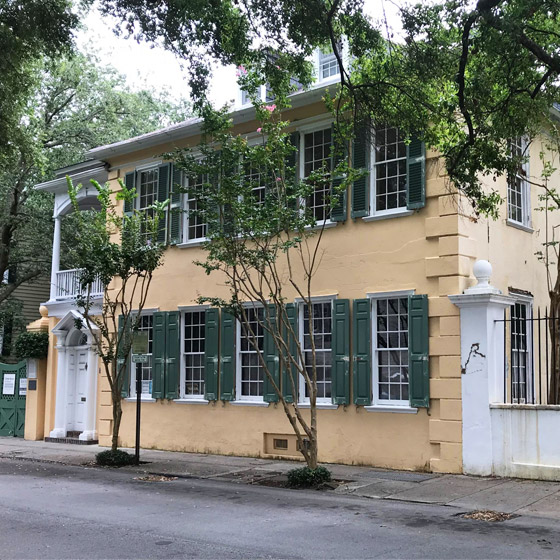
59 Church Street - Thomas Rose House
59 Church Street is one of largest early houses in the original walled city of Charles Town; two and a half stories with dormers, the house was built by Lowcountry planter Thomas Rose around 1735. Rose’s wife, Beauler Elliott, inherited the lot with a previous house on it from her father, Thomas Elliott.
Rose tore down the previous house and replaced it with the structure you see today, minus the side piazza. Originally constructed as a double house, the front door was centered with two windows on each side facing Church Street (much like 69 Church Street which we looked at two weeks ago). In 1734, Rose had written his brother in England to send bricklayers to him; 59 Church Street is brick covered with stucco. The house has been painted the soft buttery yellow ever since I can remember.
Rose sold the house not long after it was completed to the Savage family who owned it for the next ninety years. The Savage family moved the entrance to the side of the house and later added the piazza; the door in the photograph is a “false” door opening onto the first floor piazza. Around 1929, local architect Albert Simons was hired by new owners of 59 Church to oversee its restoration. Many original features such as the cypress paneling are still intact.
During the time the Savage family owned 59 Church Street, there was a period where the family took in boarders. One of those boarders, a young and cheerful doctor, Joseph Ladd Brown, moved to Charleston from Rhode Island to practice medicine; it is said that he whistled wherever he went. In 1786, Dr. Brown received a fatal wound in a duel held several blocks away in Philadelphia Alley; he was still alive when he was carried back to 59 Church where he subsequently died. Dr. Brown was only 22 years old at his death, but his memory lives on here through the story of his tragic death and the sound of whistling that is sometimes heard in the vicinity of 59 Church Street or in Philadelphia Alley.
In 1970 the house was listed in the National Register of Historic Places after application of the owners Henry and Juliette Staats. Mr. Staats was an architectural historian from Connecticut; when he and his wife purchased 59 Church in 1942, they became active in the preservation movement in Charleston. Mr. Staats was a founding trustee of Historic Charleston Foundation and was instrumental in the development of the Foundation’s annual tour of homes. When Mr. Staats retired from the Foundation’s board, Mrs. Staats served on the board for the next fifteen years.
59 Church sold for over $3 million in August 2017, and I am certain that the new owners will continue the care and nurturing that this house has enjoyed since it was built.
Next week we will continue exploring Charleston history through her structures.



